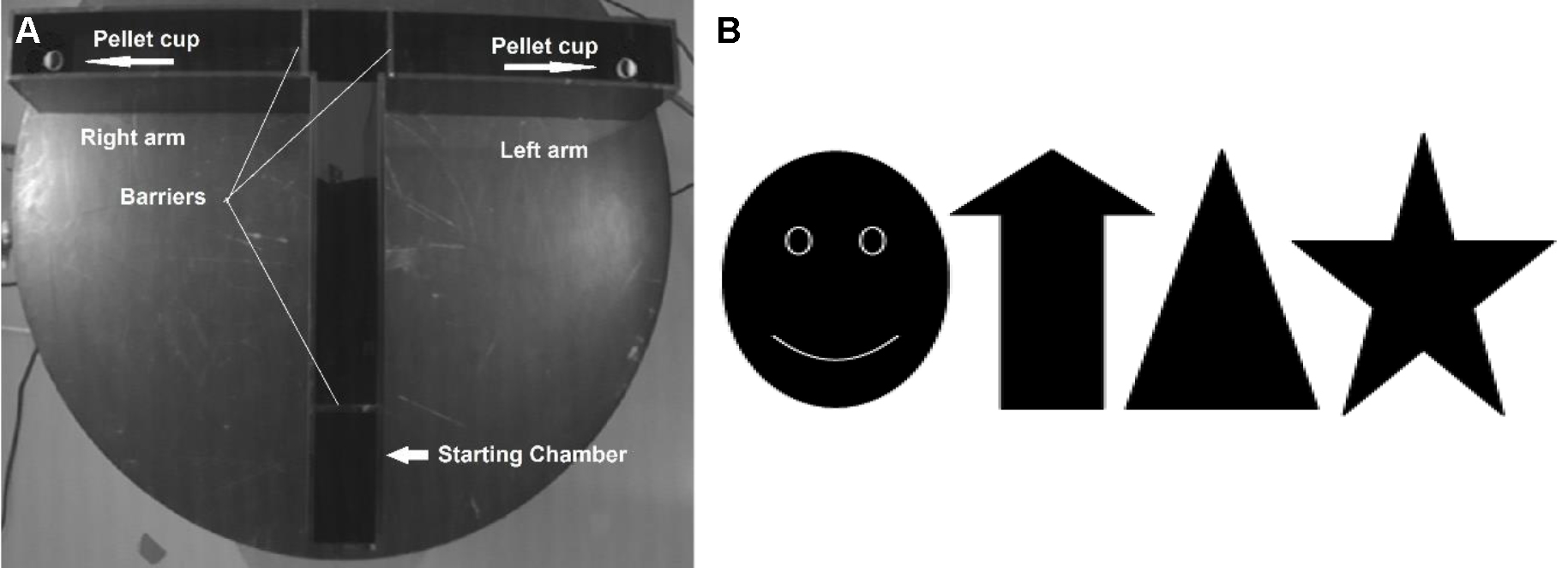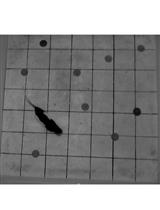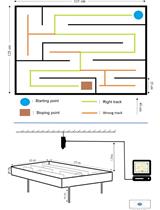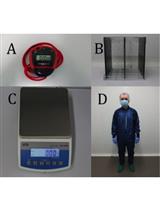- EN - English
- CN - 中文
Evaluating Working Memory on a T-maze in Male Rats
评估雄性大鼠对T型迷宫的工作记忆
发布: 2018年07月20日第8卷第14期 DOI: 10.21769/BioProtoc.2930 浏览次数: 10183
评审: Edgar Soria-GomezArnau Busquets-GarciaShauna Parkes
Abstract
Working memory is short-term memory, so temporal improvement does not reflect the consolidation of a memory trace, rather the functionality of the underlying neuronal circuits and molecular signaling cascades. The administration of drugs–either one-time or through daily injection–can elucidate the underlying mechanisms. The T-maze is especially suitable for studying dopamine-dependent working memory, since it is less stressful than other tests, for example, water maze-based paradigms (Bezu et al., 2016 and 2017). Here, we present a training protocol for evaluating the underlying mechanisms that lead to the development of spatial working memory in rats. Our approach uses a T-maze, and it can be used to get high temporal resolution.
Keywords: Learning (学习行为)Background
Spatial working memory is a short-time process where spatial information is encoded (Dudchenko, 2004) to influence subsequent behavior. Until now, only a few behavioral paradigms have been developed to test spatial working memory (Wenk, 2001). One of the most commonly used paradigms is the T-maze, which consists of a start arm and two arms arranged in a T-shape. In this paradigm, rats intrinsically tend to switch arm visits during consecutive trials, which suggests the rats remember the first arm that was visited, which is called “spontaneous alternation” (Lalonde, 2002). This tendency can be reinforced by baiting the arms with food when animals are mildly food deprived. Usually, protocols aim to train animals to reach a certain criterion of correct choices before pharmacological treatment starts or to accumulate the results over (Crawley and Goodwin, 1980; Deacon and Rawlins, 2006). We are interested in the role of the dopaminergic system in spatial learning and memory. For this reason, we treat animals with dopamine transporter (DAT) inhibitors, which block the reuptake of dopamine into the synapse and results in an increased concentration of extracellular dopamine. Further, the role of different dopamine receptors, like D1- and D2-like receptors, was elucidated through experiments that used receptor-specific agonists and antagonists. In this protocol, we use the T-maze for studying working memory, because this task is particularly sensitive to changes in the dopaminergic system compared with other working memory tests like water maze-based tasks (Bezu et al., 2017). Our overall goal is to synthesize of new compounds with high specificity to the target molecules and low side effects (Aher et al., 2016; Saroja et al., 2016; Sase et al., 2016; Hussein et al., 2017; Kristofova et al., 2018). Thus, we analyze a variety of brain structures involved in working memory processing, like the hippocampus, septum, basal forebrain, and prefrontal cortex (Chudasama and Robbins, 2004; Gruber et al., 2006) for regulation and modification of molecular signaling molecules and receptor complexes involved in memory processes (Baddeley, 1992). Rats were trained over a three day period, and we did not notice differences between pharmacologically treated rats and control rats that received additional training (up to six days) (Bezu et al., 2017).
Materials and Reagents
- Custom made T-maze, made of Acrylic glass GS black (Bilek + Schüll, Vienna, Austria)
- Male Sprague-Dawley rats (12-13 weeks old)
Note: They were bred and maintained in the Core Unit of Biomedical Research, Division of Laboratory Animal Science and Genetics, Medical University of Vienna. - Pharmacological agents
Note: They were applied in the experimental room since taking the animals to a different location causes novelty stress, that may potentiate the brief stress of intraperitoneal injection that we conducted. - Standard maintenance food (ssniff, R/M-H, Soest, Germany)
- Food reward: e.g., food pellets were provided (Dustless Precision Pellets®, Rodent purified diet, 45 mg; Bio-Serv, catalog number: F0021 )
- Incidin® Extra N (Ecolab, catalog number: 30 125 30 , PZN 002 357 95)
- 1% incidin (see Recipes)
Equipment
- Three lamps (LED chip, 20 W) for indirect illumination (mounted on a stand placed 1.3-1.5 m above the floor directed to the ceiling); Illumination within arms: 40-50 lux
- Recording camera (video camera, ABUS AUGUST BREMICKER SÖHNE KG, model: EyseoEcoLine, catalog number: TV7003 )
- T-maze
For the apparatus see Figure 1. Reward food pellets were placed outside the T-maze scattered over the table to mask olfactory cues during training. Visual cues (equipment, walls and doors, Figure 1B) were identifiable around the maze. Additional cues like paper printouts of black and white figures were placed on room walls two meters above the floor (Sánchez-Santed et al., 1997). The maze was cleaned with 1% Incidin after the training of each animal to remove olfactory cues. Indirect illumination (from floor to ceiling) provides equal light intensities (40-50 lux) in each arm. Trials were monitored with a camera (mounted on the ceiling directly above the maze- and videos stored on a PC. A freely available video capture program (Debut Video Capture) was used to store the videos on a computer. Paper printouts of figures (210 mm x 279 mm) placed at room walls and equipment served as visual cues.
Figure 1. T-maze placed on a desk (A) and printouts of external cues placed on experimental room walls (B). Two-goal arms (50 cm long, 10 cm in width, with walls of 25 cm height) and the starting arm (70 cm) could be separated by a guillotine door (A). The maze was placed on a table with a height of 80 cm. The start arm was equipped with a starting box (20 cm in length) separated from the maze by a guillotine door. At the end of each goal arm, reward food pellets were provided in a small plastic cup (30 mm in diameter and 12 mm in height) to mask the food pellet.
Procedure
文章信息
版权信息
© 2018 The Authors; exclusive licensee Bio-protocol LLC.
如何引用
Hussein, A. M., Bezu, M. and Korz, V. (2018). Evaluating Working Memory on a T-maze in Male Rats. Bio-protocol 8(14): e2930. DOI: 10.21769/BioProtoc.2930.
分类
神经科学 > 行为神经科学 > 实验动物模型 > 大鼠
您对这篇实验方法有问题吗?
在此处发布您的问题,我们将邀请本文作者来回答。同时,我们会将您的问题发布到Bio-protocol Exchange,以便寻求社区成员的帮助。
Share
Bluesky
X
Copy link












